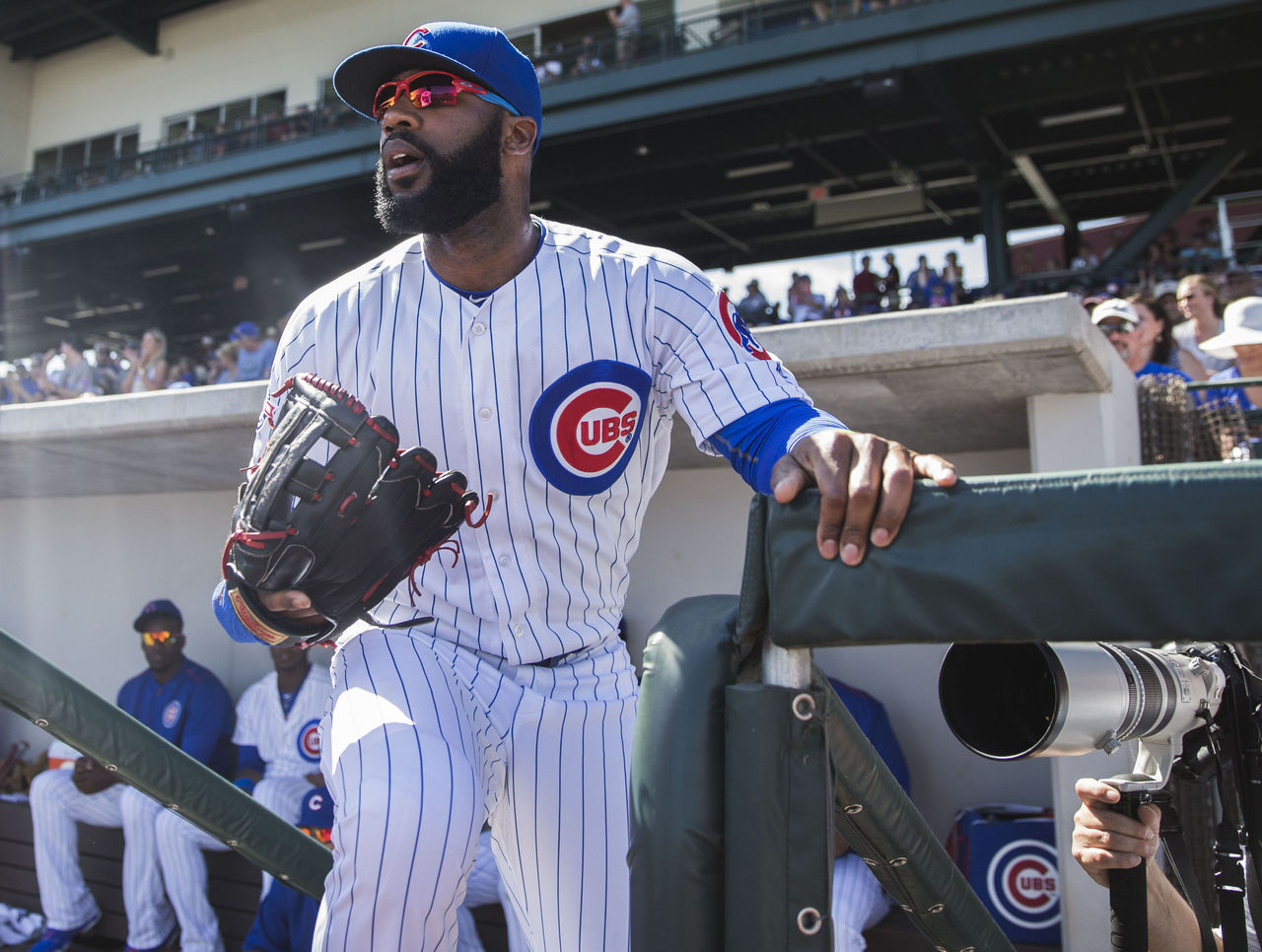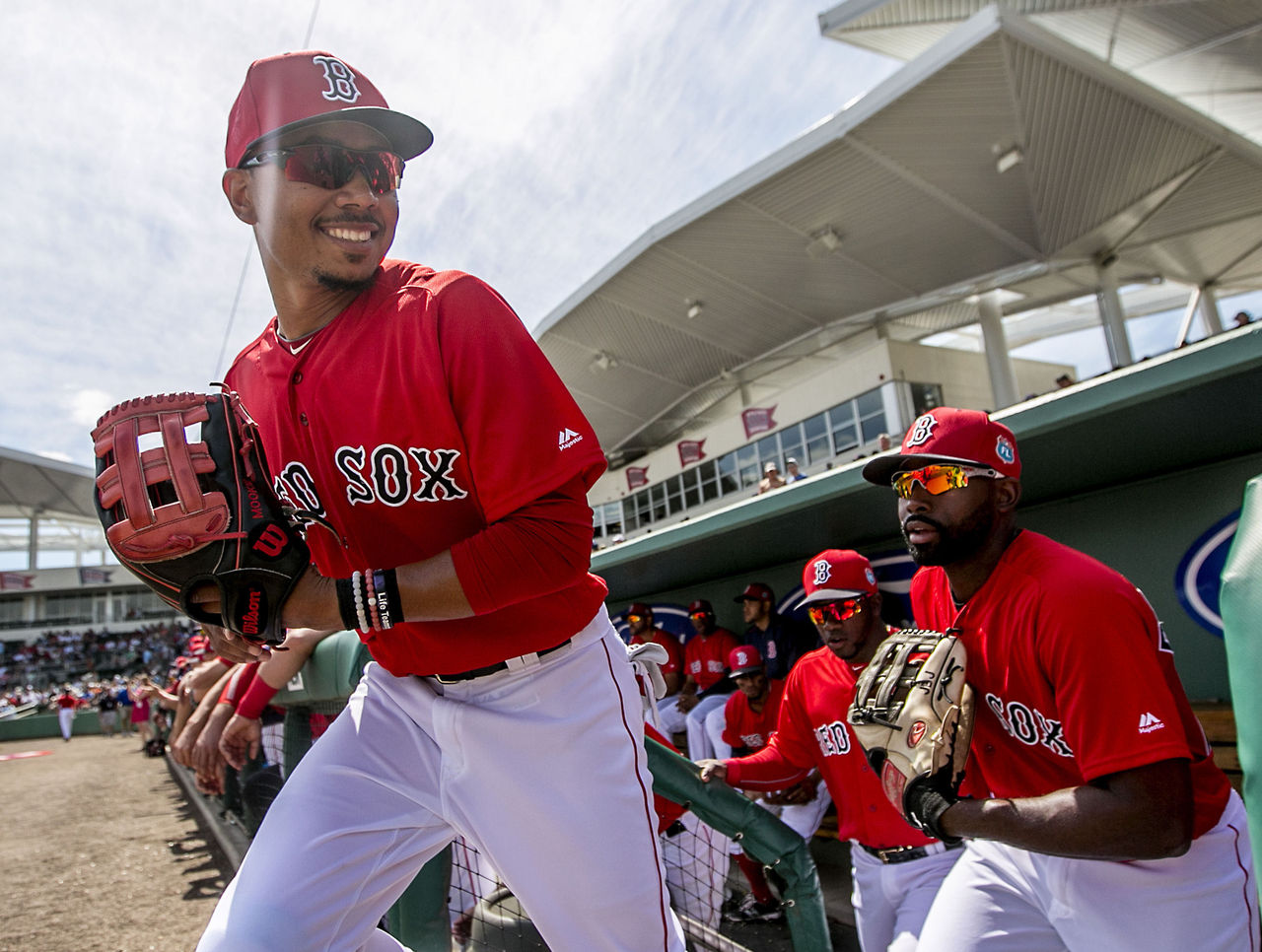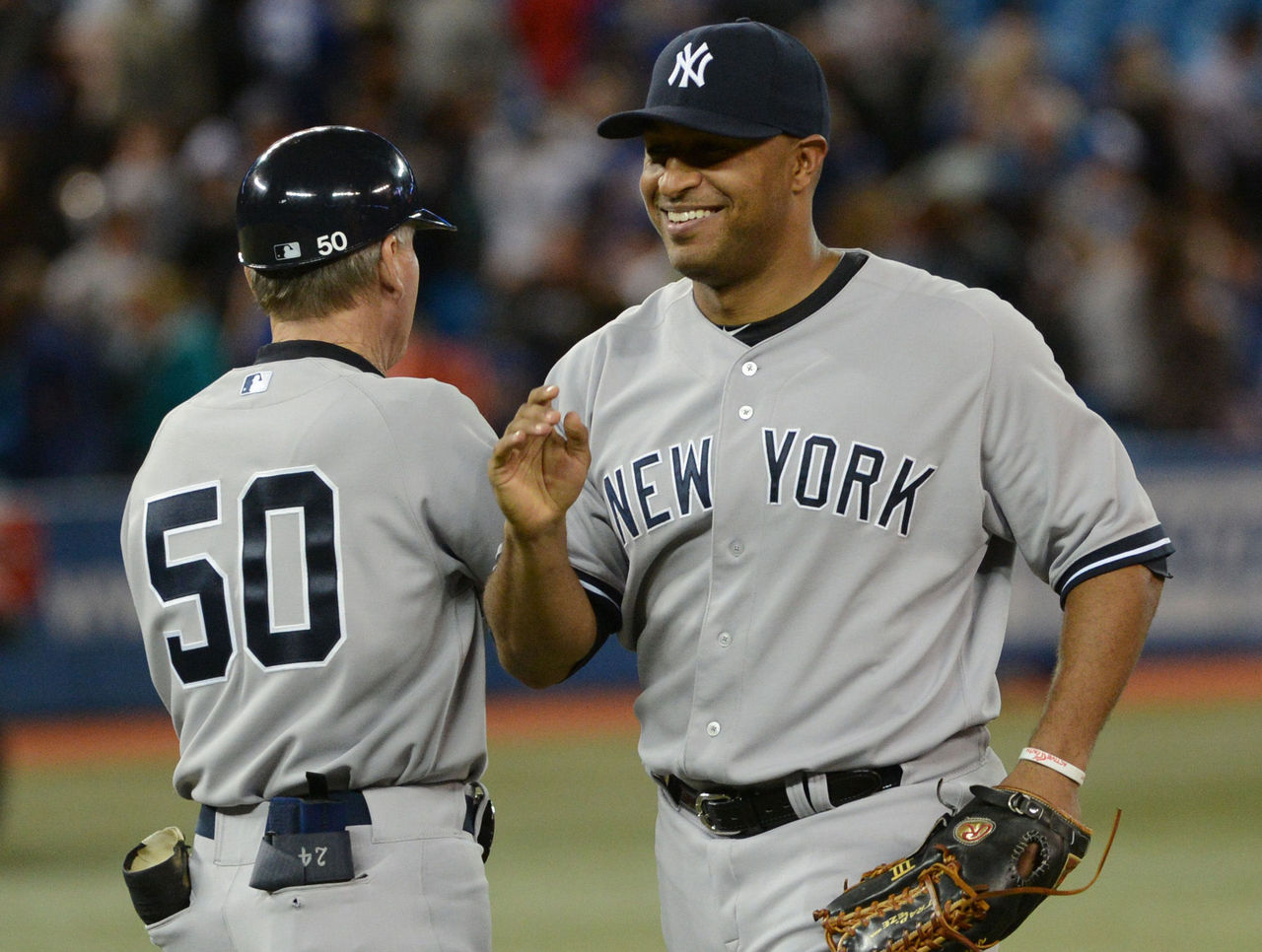Column: Vernon breaks down 4 key position changes
Former MLB outfielder and three-time All-Star Vernon Wells will be sharing his expertise and analysis with theScore this season. The following is from a conversation with theScore's Dan Toman.
There are some big-name major leaguers doing work at new positions this spring: Hanley Ramirez, Jason Heyward, Mookie Betts, and Yoenis Cespedes are four players that come to mind. Some of them have experience at the position they’re transitioning to; others are learning it for the first time.
I had to make the center-to-left adjustment after the Blue Jays traded me to the Angels during the 2011 offseason. I had played 12 straight years in center, but the Angels expected to have two talented young outfielders in camp, Peter Bourjos and Mike Trout, so it wasn't immediately clear after the trade where I would play. That conversation took place with general manager Tony Reagins just before the press conference. I asked him, "Am I going to be playing center or left?" He said, "Mostly likely left, we've got a young kid that looks like he's going to be pretty good in center," and I said, "OK."
It was pretty much that simple. Credit to Mike and Peter, they absorbed a lot of advice from me and Torii Hunter, two guys who had been around a long time. They wanted to ask questions, they wanted to learn. Peter put himself in a position to truly be an elite defender in center field. But as soon as Mike walked through the door, he didn’t allow anyone else to play the game.
Jason Heyward, Cubs

2015 position: RF (795 career games)
2016 position: CF/RF (32 career games)
Playing defense is all about repetition. Regardless of where you are, what uniform you have on, when the ball goes in the air, it's all the same. For me, and other outfielders who move either to their left or right, we consider ourselves as outfielders, not one specific position. In Heyward's case, the easiest move is going from a corner to center because your angles are much easier. Everything is in front of you. Yes, you have more area to cover, but you also have the advantage to see swing plane better, you see pitch location better. It allows you to get better jumps on balls.
The biggest adjustment will be playing more games at Wrigley Field, and dealing with the ivy and brick wall. Fortunately, he's already used to playing there. This move gives him the chance to be the captain of the outfield. He has the arm to be able to do it, obviously having played right field his whole career. I feel like it's going to be a smooth transition for him because he has the instincts to be a quality defender in center. If he didn't, Joe Maddon wouldn't put him there.
Mookie Betts, Red Sox

2015 position: CF (161 games)
2016 position: RF (23 career games)
At Fenway, right field is the position where you have to cover the most ground, which is different from any other ballpark to play in. So for the Red Sox, who have both Jackie Bradley and Mookie Betts, it's a huge advantage to be able to play two center fielders at Fenway. Betts has some experience in right, so he knows how much room there is behind you, and that's good for him because he can be the athlete he is and take away some hits. Opposing teams won't be too happy he's out there. That's the beauty of having another center fielder on your roster.
When you're in center, balls off the bat aren't slicing the way they are in the corners. So for Betts, when a right-handed hitter hits a ball to right field, the angle of the ball coming off the bat, more times than not, it's going to be going toward the line. He'll know that balls are always going to be slicing in this or that direction, and that he has to put himself in a position where the ball is going to be coming down and not away.
Yoenis Cespedes, Mets

2015 position: LF (409 career games)
2016 position: CF vs. RHP (115 career games)
I don't think his instincts are what you would think of as a pure center fielder, but athleticism sometimes can help with that. You need a guy out there who's comfortable at going both directions, going back on a baseball. He's said that he prefers left and is still getting used to how much further the ball travels in center. We all know when he gets the ball in his hands he'll be able to throw anybody out from anywhere on the field. It's going to come down to how consistently he's able to put himself in proper position to make those plays, and spring training will be key for that.
Hanley Ramirez, Red Sox

2015 position: LF (92 career games)
2016 position: 1B (No experience)
When you're at first, it requires pitch-by-pitch focus and knowing where to go with the baseball, and knowing where to be even when the baseball's not hit to you. It's a fun position to play, but there is far more work than what you would think.
In Hanley's past, he's played the infield, so he understands the time infielders put into what they do. They spend far more time working on defense, especially in spring training, than outfielders. So he's used to that type of workload that can possibly take away from some of the swings that you'd get during spring training.

I played one game at first with the Yankees, and I was like, man, I got the position that's closest to the first-base dugout, which is awesome. I don't have to run all the way to the outfield. I got a quick education on it, though. It's far more involved than what the average person thinks - even what major leaguers think.
During that 2013 season with the Yankees, I was able to play first, second, and third, and more than anything, it kind of brings you back to being a kid. Getting a chance to go do something you haven't done. It puts you back into that child-like state of I get to play a game in a different spot and this is going to be a blast.